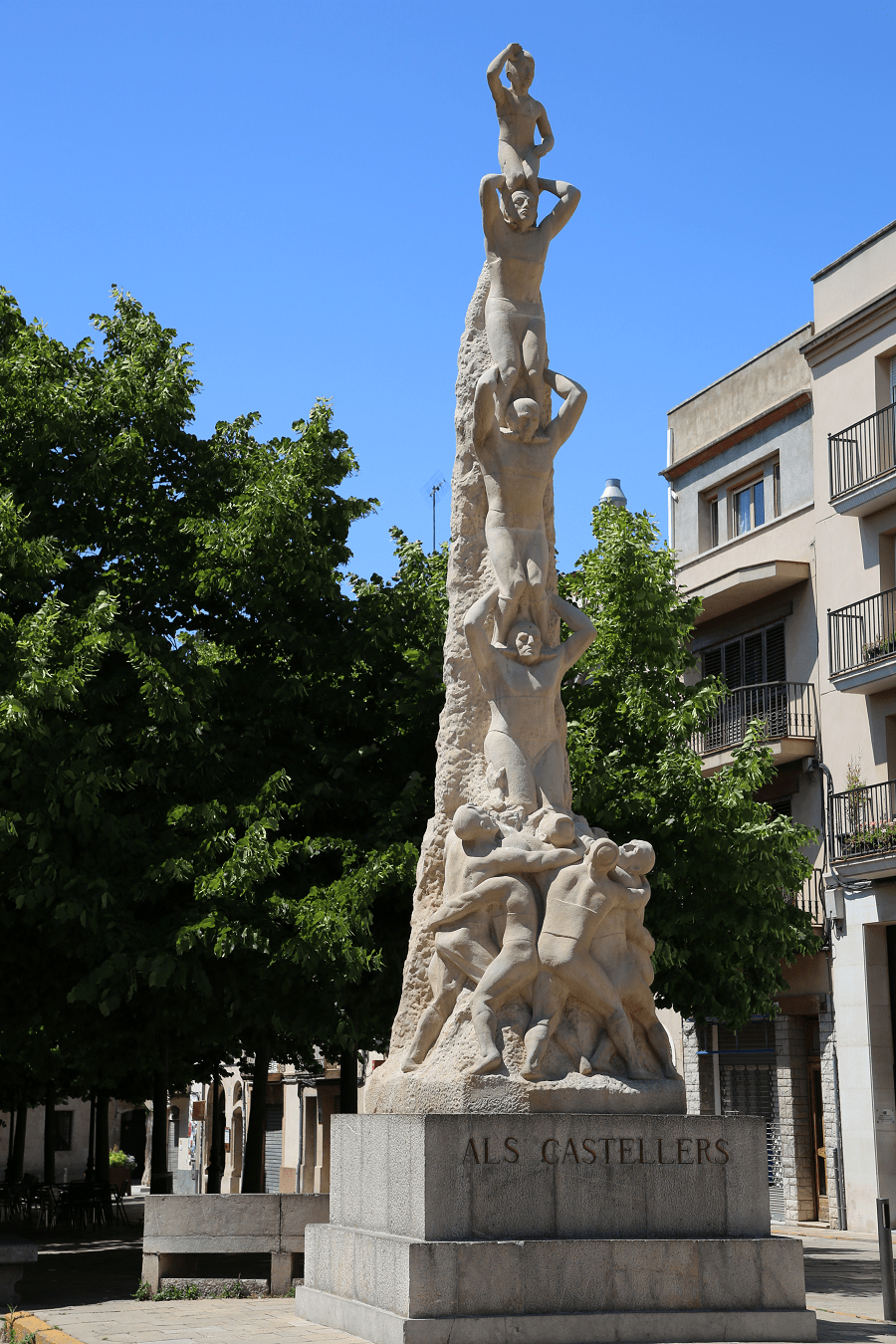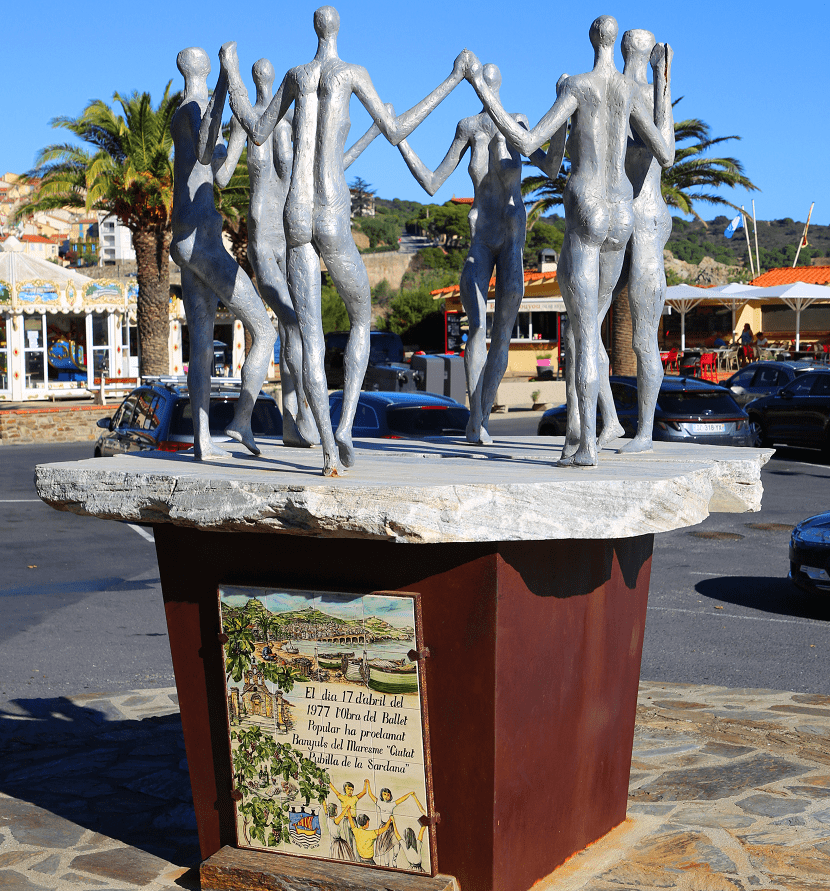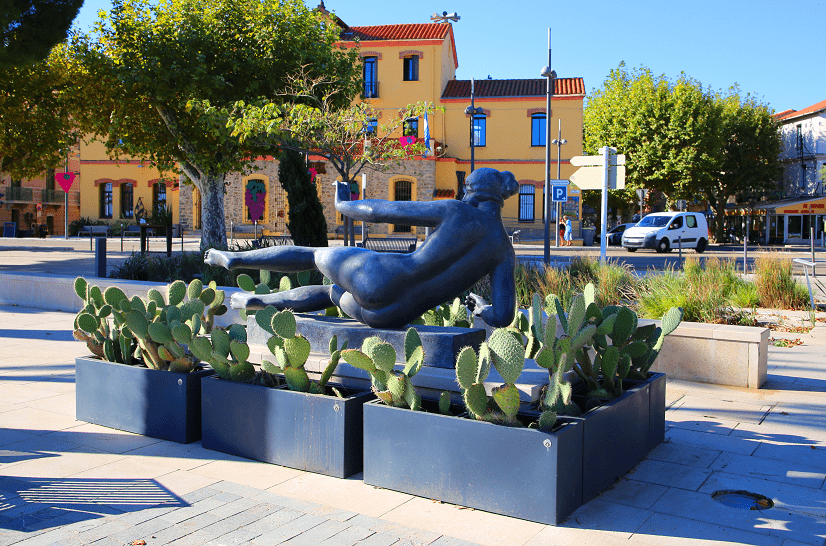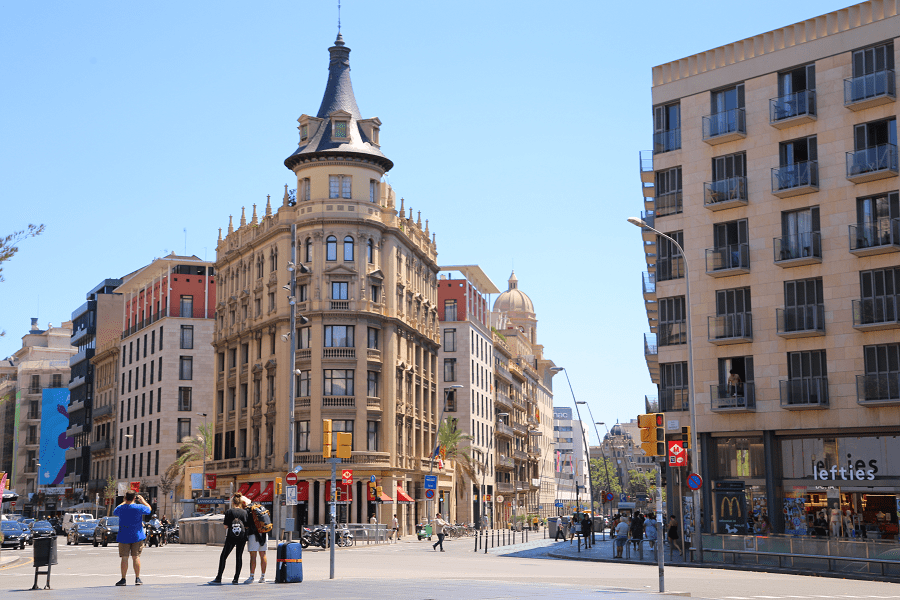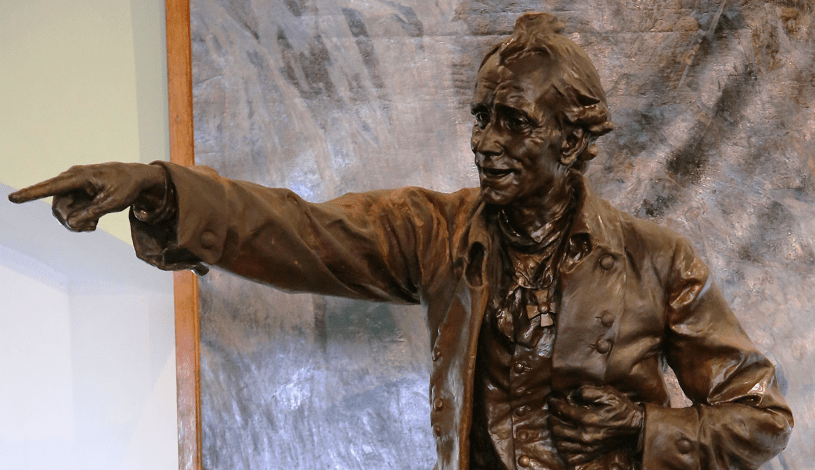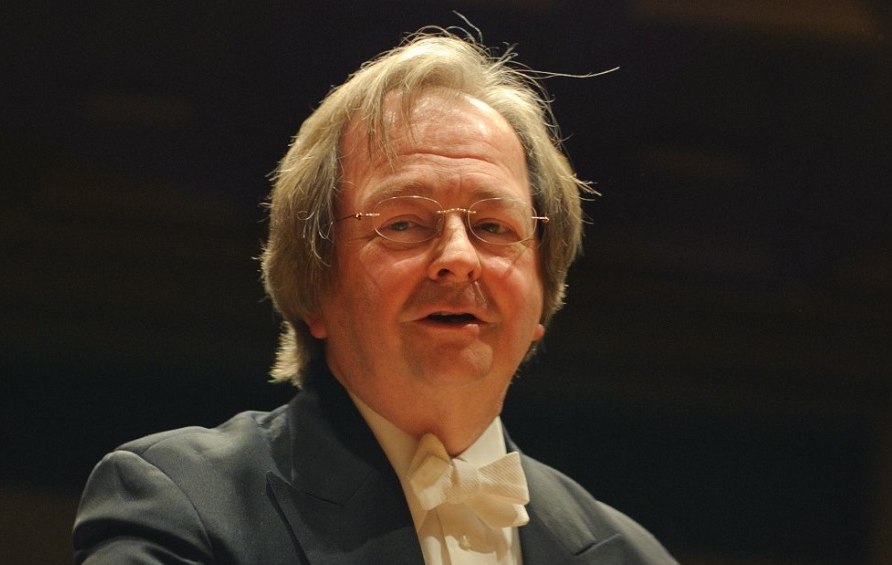Morten Traavik talks about the hidden messages and social statements in his works, working with North Korean authorities on cultural exchange programs, organizing beauty pageants for female landmine survivors in Angola and Cambodia, his recent projects and other interesting things
It’s hard to define Morten Traavik’s work. As he says himself, he is one who likes to kick in different directions. Educated as a theatre director, this creative Norwegian likes to put his hands on a wide range of different projects at the crossroads of contemporary art, activism and social issues.
However, Morten Traavik tries to avoid labeling himself as an artist, half-jokingly referring to himself as an engineer of human souls, diagnostician and a trickster. His works – ranging from installations in public places with twisted meanings, beauty pageants for mine-injured women in Cambodia and Angola, arts and culture collaborations with North Korea and many others – have in common an ambiguity principle that provokes an inner discussion and leaves contradictory feelings.
We had a chance to talk to this interesting personality about his most memorable projects, hidden statements and social messages of his works, the importance of context, surreal experience of North Korea, his current plans and other interesting matters.
Interview: Dmitry Tolkunov
Hi Morten! Thank you for finding time for us. You have been involved in so many different kinds of things – theatre and film directing, contemporary art installations, social activism, writing and music videos. How do you identify yourself, who are you mostly – an artist, a director or a social activist?
That’s a question I ask myself as well and which I’m quite often asked. If you google me I guess you will find links where I’m called a writer, or a director, or an artist and so on. The truth is that I try to avoid the label “artist” because I’m kind of suspicious of such a term. The legendary Norwegian professor of rhetoric Georg Johannesen, who was also a writer, supposedly said that the greatest tragedy of his career was when his debut collection of poems won a prestigious award because after that nobody took him seriously.
Whenever I’m asked about my work, I call myself an engineer of human souls or a diagnostician. So I’m not a doctor, I’m offering a diagnosis and then I leave the dirty work of acting on that diagnosis to others. I guess this is my privilege as an artist (laughs). So in other words, I take whatever I need from the role of an artist but I prefer to avoid the label.
Does this diagnostic aspect, in other words, signify some kind of social message or a statement which is usually the backbone of your projects?
I would say yes and no. If you say the plural social messages then I would agree. But it is not one specific social message. I try to kick in more directions than one with the things I do. I think ambiguity is the key to any kind of artistic expression that aims for social impact. If you don’t offer this ambiguity we move from the area of art to pure activism, propaganda or other forms of instrumentalism.
Do you think that these social messages in your projects somehow work and leave some traces and impacts?
Well, at least I hope they do. I aim for messages that leads to a discussion, discourse and debate.
Your project “Trial of the Century” is made in in the form of a public court trial. This imaginary trial was a well-staged show on one hand and on another, the final judgement was passed by the audience acting as a people’s tribunal . Is this mixing of art and reality in order to get a new and fresh view on some problems a principle that takes place in most of your projects?
Well, the starting point for “Trial of the Century” was that Greenpeace and other environmental organizations were suing the Norwegian government for allegedly breaking the Constitution by allowing increased oil extraction from vulnerable areas in the far north Barents Sea. So we decided to do an imaginary staging of the same trial. But the outcomes of the imaginary and real trials were different.
What was interesting was that several of the expert witnesses that we had as performers in “Trial of the Century” also appeared in the same capacity in the real trial when it reached the courts half a year later. We had a wide range of experts – scientists, eco-activists, minority rights activists (whose way of life are even more strongly affected by oil extraction in the Barents Sea), shamans, politicians and cultural workers. Both as prosecutor and defense we had real, professional lawyers, so all the participants in the performance were authorities in their respective fields. And it all, of course, added a lot of authenticity to the stage performance.
And what was the decision of real trial and of the imaginary one?
The real trial decision was to allow the increasing oil extraction, the imaginary one was against it.
Do you think that the respective outcomes of the real and the staged trial indicate that art is idealistic compared to real life?
That is one way of looking at it and I don’t necessarily disagree. I think it is right to say that an artistic approach to a moral problem often tends to be idealistic. Artists are idealists in the sense that they have an ideal and want to realize it. But the law is not about ideals, it is about interpreting the law using your knowledge of it, so it’s another game anyway.
Like all of your projects this “Trial of the Century” doesn’t seem to be a commercial one, it is not a monetizing show for which you can sell tickets and make money on it. Still, such kinds of things need a lot of investment to be done. How do you find financial resources for making your projects happen?
Almost all the projects I do of this kind are sponsored by the Norwegian Arts Council and Ministry of Culture. In other words, I am like a State court jester. Like in the old days the one who was behind the king and was allowed to joke and to tell the truth. I can do basically whatever I want, the only thing I have to be prepared for is some mild discomfort of people or institutions being provoked by my activities.
It is actually a measure of a democratic society like Norway that somebody like me are not only tolerated, but even actively supported by the State. Some of my projects like, for example, the ones that I’ve done in North Korea can be sponsored by one ministry – the Ministry of Culture and opposed by the Ministry of Foreign Affairs whose official position was that doing anything that seems to be friendly to North Korea is really horrible. But luckily for me, the so-called “arms length distance” principle is firmly established in Norway, which states that the State should not interfere with the content of what it is funding.
As I know, sometimes the people who don’t like what you are doing cause you not only discomfort but problems with how to realize them. I think a typical example could be “The Arch of Triumph” which is in a way not only a pure art project but also an interesting social experiment. Can you please tell us a bit about the difficulties that you faced when you were trying to make that happen?
It took place in the arch-shaped “Horse Shoe Block”, a huge apartment complex in the Northern town of Hammerfest where people in their apartments during the polar night were asked to turn on and off the lights in their apartments according to a synchronized time schedule to create messages in a huge human LED strip.. In the end, half of the block’s inhabitants did not want to take part in it. Perhaps they (because of my reputation) thought that it was too totalitarian, too North Korean and so on… And if you want to so such an exercise in a democratic society I guess you’ d have to to bribe a lot of people to be bothered to take part.
Did you pay?
No, then it wouldn’t have been an experiment in voluntarism.
Was the main idea of this project to show how one idea and mission unites people and brings a common result?
Well, rather “if” or “whether” than “how”. But what this project also exposed was that there were not only the people who were skeptical about the project itself, there were also people who didn’t want to be a part of it as a community. So, as a result, for me, the visual part was not the main point, the result was having a look at the community of the people. So the name “The Arch of Triumph” already consists of a question – what is the triumph referred to in its title, is it a triumph of community or of indifference? I think any social experiment like this with a lot of people who haven’t asked to be a part of it has an outcome that you can’t script. And you have to accept that.
So could we say that your works always consist of some social messages and statements?
If you like, but it’s not the ultimate goal. Public attention creates the public discussion, both in the public space and hopefully also within people themselves, by highlighting the paradoxes, contradictions and ambiguities. I think one of the most important tools to make a change is stimulating people to question their own beliefs. Not the beliefs of others, that’s very easy. It is much more demanding and interesting is to have an inner discussion with yourself.
Among your works one of the brightest examples of highlighting these paradoxes and contradictions is «Miss Landmine». Can you tell a bit about the story of this project and how did you come up with this idea?
It all started because I had at that time a girlfriend whose father had quite a high position in Angola – he was a minister in the first government of the country’s independence and he is also one of the most well-known national writers. We went to visit him at Christmas time in 2003, which was les than a year after the end of 30 years of civil war and there were still a lot of scars everywhere. Most of the inland roads you couldn’t travel on because they were either still mined or had been blown up, a lot of destroyed infrastructure, and lots of amputees who had stepped on landmines.
At some point after the visit, I was asked to come up with a concept for the first art festival in the capital – Luanda. I discovered that beauty pageants are a very big thing there. When I started to think of a concept, I decided to pair ideas that seemed incompatible – landmines and beauty pageants.. I realized that at that point, I was probably the only person in the world with this particular idea and so I felt some kind of moral obligation to try to make it happen.
So for the four following years, I went numerous times to Angola looking for partners, for the people who had connections with the government and aid organizations and of course for recruiting the participants. That’s the very short version.
As I know, in Angola it went well, but the next time when you did “Miss Landmine”, in Cambodia, local authorities banned the pageant at the last moment.
Actually, right up until the ban I had collaborated closely on the Cambodian version with that country’s government, just like in Angola. The difference was that in Angola it was quite a remarkable project in the sense that it was the first and probably the only time that an African government actually funds a project brought by an outsider from a “rich white donor country”. As a rule, in the international aid industry it’s the other way around. In the Angolan version, the winner was even crowned by the then-First Lady, Ana Paula dos Santos, lending even more prestige to this internationally high profile event.
“Miss Landmine Cambodia” happened just a year after the Angolan version. Like in Angola, I collaborated closely with both its National Demining Commission and also the National Disabled People’s Organization. Everything had been going well until a week before our final event. One Australian-run organization supporting people with mine-related injuries was very pissed off and jealous of a newcomer stealing all the attention so he started the campaign against my project. So their director lobbied his friend the Cambodian minister of social affairs to talk to the prime minister and to ask him to ban the final event. So, interestingly enough it was another “whitie” who sabotaged my project, not the locals themselves.
However and in the end, I managed to relocate the final event to Norway, where the candidates were represented by life-size photographs carried on to the catwalk by girls and women from the local exile Cambodian community.
Later, I traveled back to Cambodia secretly to deliver the prize to the winner. It was a cash prize and also the most important part of it were the prostheses for the winner.
It would be interesting to know, what kind of arguments were used by this Australian guy to sabotage “Miss Landmine” in Cambodia, which is, at first sight, a very good project with noble goals?
The main arguments were quite interesting if you think about them in the context of the hidden messages of this project. For example, he claimed that it would be shameful and very degrading for the women who would take part in it and they would be making fools of themselves. This says quite a lot about the mentality of the people who were making the criticisms because there is a premise implied that these women are idiots who do not know what’s good for them. Nobody ever cared to ask the women themselves what they thought about this pageant and why they took part in it.
This mutating of the new questions and hidden messages because of the changing circumstances is an often happening thing in your projects. Think «Borderlines» installation could be a good example of how it works?
Yes, I think this “Borderlines”, just like “Miss Landmine”, shows clearly how basically the same project can take on different meanings over time and with changing circumstances. So, context is not everything, but sometimes almost everything. When I first implemented “Borderlines” back in 2011, political relations between Norway and Russia were very good. The installation was opened by Her Majesty the Queen of Norway together with our then-Minister of Foreign Affairs, in the presence of the Russian ambassador and Border Commissioners from both countries. At that time, “Borderlines” was interpreted as a monument to cross-border collaboration and that the common border is something very fluid and something that can be crossed.
The next version of “Borderlines” took place as a response to my friend and collaborator, Norwegian former Border Inspector Frode Berg, just having been jailed in Russia for espionage. I used the same border posts installations both in his hometown of Kirkenes, and in Oslo in front of the Ministry of Foreign Affairs. In this new context, the same border posts started to symbolize something else – his background of the border inspector and someone who worked a lot with Russia, and that borders can take a much more sinister character than what was shown in the first stage of “Borderlines”. In the new context, the complicated relations between Russia and Norway were highlighted and compared to how they had been back in 2011.
One of the most known controversial things with a wide range of interpretations and hidden meanings that you have done for many people are the cultural projects with North Korea. First of all, it would be interesting to know how did you manage to get to this super closed and authoritarian state, gain the confidence of local authorities and work out cultural exchange programs with them? I’m guessing it was not a simple task?
The first time I made the trip to North Korea was with the so-called “Korean Friendship Association”. It is run by a Spanish guy who appears to be the classic proverbial useful idiot for the North Korean regime.
His then-second in command (since defected) was the Norwegian Bjornar Simonsen, who you also see in the “Friends of Kim” documentary and who I who was the colleague of my colleague’s boyfriend – Norway’s a small country. I got to know him and he told me that it was possible to go to North Korea. So it was undoubtedly interesting – of course, North Korea is very fascinating by itself, but as well this Friendship Association is a very psychologically and sociologically interesting microcosm, it is a really hardcore nerdy, incel-like community.
Our North Korean hosts were the wonderfully-named “Democratic People’s Republic of Korea Committee for Cultural Relations with Foreign Countries” (DPRKCCRFC). I quickly realized that to get the right connections for any kind of artistic interventions, I somehow needed to get around this Friendship Association because those guys naturally didn’t want anyone else to become the magic keeper of the gate. The specific thing of such a controlled society like North Korea is that to be able to develop trust you need to put in a lot of time and resources. So, to start to really work on something meant that I had to go back there many times, have a lot of meetings there and drink a lot of soju.
So, what were your first impressions of North Korea?
My first impression was double and full of ambiguity. Of course, North Korea is very special, hardcore and extreme in many ways. But when you go there with a western media narrative in the back of your mind at least for me it became very obvious that it is a developing country and it could not be a threat to world peace even if they wanted to. In some ways, I felt that North Korea was like a caricature to the Soviet Union but with Asians.
I always had a feeling that North Korea’s vibe is closer to China’s during Mao Tse Tung’s ruling. At least, the Soviet Union in my perception in its last decades in the 1970s and 80s was a cozy, liberal country compared to what we can see in North Korea at the moment.
Well, of course, what we can see even in today’s North Korea probably have more in common with the Stalin era than Brezhnev’s relatively benign “stagnation” of the 70s-80s. And like I’ve said it’s not a copy of the Soviet Union, but rather a caricature. It is an East Asian country, so yes, the mentality is quite close to Mao’s China. But if you look at the “stage props and costumes” they are very Soviet, things like architecture, officers uniforms, and their pop music that sounds like old Soviet Estrada. So the steak is China, but the sauce is Soviet.
What are, in your opinion, the most successful cultural exchange projects that you have done with North Korea’s authorities?
I guess the crowning achievement was Laibach’s concert in Pyongyang in 2015, which is also the subject of our subsequent documentary “Liberation Day” (2016).
And the biggest challenge was the art symposium DMZ Academy, which became the documentary “War of Art” (2019). I wouldn’t call this symposium a disaster. It was what it was. It happened in autumn 2017 when Trump was getting really aggressive in his rhetoric towards North Korea, threatening with “fire and fury” and so on. I’ve been in North Korea many times before when political tensions have been high and world headlines are on full World War 3 alert, but in Pyongyang- and in Seoul for that matter – locals couldn’t care less, they’ve seen and heard this so many times before. But this time there was a guy in the White House who was just as bellicose and unpredictable as the North Koreans themselves, which scared them a lot. You could really feel it, and that again nurtured a national paranoia towards outsiders which made our project, which was already a big challenge, even more so.
How did you come across Laibach and how did the idea of hosting a concert in Pyongyang come to you?
I had been a Laibach fan for many years and was very honored when they contacted me and asked me to direct a video for their song “Whistleblowers”.I came to Ljubljana, hung out with them and at that point, I had already been working with North Korea for several years.. At first, they thought that my suggestion to perform in Pyongyang was a joke but they had no doubts that they had to do it if there was the possibility. I always said that North Korea is ready-made Laibach territory, it was obvious that we had to try to bring Laibach to their new spiritual home.
Do you think Kim Jong Un knows and likes Laibach music?
I am pretty sure that he knows that Laibach exists after this concert because it wouldn’t have happened without his approval. But I think it’s too early to say how big of a fan of Laibach he is.
One of your most famous cultural exchange projects, besides the Laibach concert in Pyongyang, is Korean accordionists playing their interpretations of western hits, especially a-ha’s “Take on Me” which so far has close to 3 million Youtube views and also “The Sun Always Shines on TV”. It would be interesting to know how did you technically arrange them? Did these young accordionists see the original a-ha video or at least hear the original versions of the song or they had only the notes for them? I ask because I know that the North Korean authorities are really unwilling to allow any western pop-culture influences to get into the country.
They actually made all the arrangements themselves, as notes for the accordion for a-ha songs didn’t exist. I simply gave them a CD of the a-ha’s first album “Hunting High and Low” (1985) and asked them if they wanted to interpret it in any way.. For me, this was also a way of testing whether it was true or not that Western pop music is really banned in North Korea.
I think your photo projects (like “Rock Steady North Korea!” where you were staging yourself as a touring rock star in front of the main revolution monuments and “Discocracy” where you were posing dressed like a disco era fop with a disco ball in your hands) were a kind of quite risky way of testing the limits too. I wonder how did your hosts react when they saw you in such untypical for North Korea look in front of sacral for them places?
I think the reaction would have been quite negative if I hadn’t have explained to them before why I was doing that. What you don’t see in this picture is the North Korean minders that were always standing behind me and were looking at what I was doing. And this part you had to be able to explain it and to justify it on the language of power’s own terms, which is also a big part of Laibach’s method – to subvert the language of power and to put it in terms that the power understands. Of course, they didn’t understand everything, but the main idea that I explained to the North Korean minders to convince them to let me do this was that in the West where I am from people also have idols, they have somebody that they look up to, but in our part of the world, it is usually rock or pop stars and so on. I said that allowing me to mix these western esthetics with the symbols of their respect to the people will maybe help some young people in the West to understand a little bit more why they are so respectful to their leaders. And they understood and bought it. And I didn’t even have to lie because really in the western world there is not so much mass worship left, probably only at rock-concerts and football matches. So, I think there is a connection, of course, although it is not the same, but the feeling of Justin Bieber fans going bananas and the feeling of a North Korean going bananas standing 20 meters from the living Kim is quite similar.
As I understand your project “Rock + Football = Spektakel” that you directed in Kirkenes, Norway a couple of years ago was dedicated to these forms of mass worship that are left in western society.
Yes, “Rock + Football = Spektakel” is a kind of an attempt to put these two expressions of fandom, collective energy, group identity, and tribal instincts (rock concert and football match) into one. Laibach’s concert was augmented by a choreographed football dance match.
You have dealt with your North Korean projects with a certain sense of humor, which is the backbone of almost all your projects. But, don’t you think that there is a danger in observing such totalitarian states like North Korea through this postmodern ironical prism? It’s kind of like Andy Warhol doing funny pop-art prints with Mao that makes people think that these totalitarian states are something kitschy, grotesque and funny, but they are not funny at all if we think about people living there in a spooky reality under hardcore state pressure.
I’ve never regarded my work in North Korea as primarily making a joke. And taking into account all the discourse around these projects, especially the criticism from human rights activists and other people taking it all deadly seriously shows that there are quite a few who see nothing funny at all about it. I can agree that compared with 99% of other coverage of North Korea my projects do have a glint in the eye, playfulness and a sense of humor. But I don’t really see how making fun or at least bringing out some of the inherent ridiculousness of totalitarianism should be a danger. Quite on the contrary, I would say that it is what true subversion is all about. Any and all dictatorships are deadly serious and have an instinctive hate and fear of humor.
Besides bringing western artists to North Korea, you have also brought North Korean artists abroad. Don’t you think that such projects like bringing little kids from a North Korean music school to the West could be psychological trauma for them, something that could totally crush their picture of the world and bring to their heads a cognitive dissonance and a lot of questions that can be a source of danger in their country?
I guess it depends on the kid – children are like other people, some can be more sensitive, some less. Anyway, these North Korean children that came to perform in Norway was there for one week only. My impression was that for them, it felt mostly like going somewhere exotic on a holiday. And, if we look at ourselves too, a couple of weeks’ holiday is rarely enough to start hating your own homeland or develop a serious cognitive dissonance if it is not already there before your visit. And the other point is that, believe it or not, all of these kids during this week had some moments when they were missing home, one of the reasons for that was that they had been brainwashed to believe that North Korea is the best place in the world. But the other is that North Korea is not Somalia, of course, there was a hunger in the late ‘90s/ beginning 2000s but it was long ago, now life in Pyongyang and other big cities there is materially not so bad and these kids are living quite ok lives.
So I think it would be a much more serious cognitive dissonance for a grown-up person who already has dissident thoughts to take them for a long time to a western place and then send them back again.
I don’t really see a problem in bringing Northern Koreans abroad because the alternative can be just leaving them inside as then they should not be exposed by inner conflicts because of going abroad. I just have to assume that North Koreans’ inner integrity is big enough to think for themselves. One funny example is, the professor of the young accordionists that I brought to Norway, who also clearly enjoyed the stay, was absolutely shocked that one had to pay a small entrance fee to use the public toilets in one of our parks. To him, this showed how low capitalism had sunk to even exploit the most basic human needs! And I’m sure he shared this perspective with his students too (laughs).
Do you think there are a lot of people in North Korea with hidden dissident thoughts?
There are a lot of people that have everyday frustrations with the government that can be compared to the Soviet Union reality – things like rationing the food, never-ending construction projects, bad infrastructure and other things that don’t work in the way they should do. But, I think for many different reasons there is a really small number of active dissidents. And I know for sure there is no organized dissident movement inside North Korea.
Are you planning to organize some more cultural exchange projects with North Korea in the future?
I stay in touch with them and actually just the other day had an e-mail from the Committee, who really want me to come back to continue the collaborations. I am going to tell them politely but firmly that for me even to consider such a proposal, it is totally up to them to provide the necessary permissions and freedom to experiment. They need to present me with some serious ideas to not repeat the failures of the War of Art project.
What are the new and recent projects that you are working on now?
There is always more than one thing going on, and all at different stages of completion. One of them is that my book about my North Korea “Traitor in North Korea” is coming out in Russian later this month. I’m also doing an exhibition at the Triumph in Moscow in April.
Also, I’m working on a new documentary on Korea. We are in the early stages of filming at the moment. We have just finished the teaser. It will be about a North Korean refugee who lives in South Korea and runs a marriage agency that specifically marries North Korean refugee women with South Korean men. She will be the main character of the documentary and the working title for the film is “Men are from South, Women are from North”.
But what occupies me mostly these days is preparing the big stage production “The Wastefulness Commission” https://www.fib.no/en/programme/the-wastefulness-commission/
I’m educated as theatre director – which will have its world premiere at the Bergen International Festival in Norway in May.
I am also developing a script for my first feature movie that I will do with a Latvian production company. It will be a kind of a body horror movie connected with the Norwegian salmon farming industry.
Morten, we wish you good luck with all these different and interesting projects and thank you very much for this interesting talk.
Thank you and God bless!






